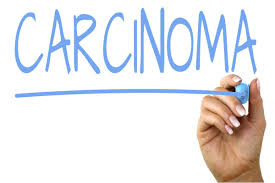R. del Mas. PhD., M.S., Hugo, Minn
The knowledge of the remedy leads to the knowledge of its application. Crude knowledge of drugs begets crude therapeutics, and crude therapeutics obtain results.
Man, and not the animal, is fitted to prove drugs. He alone, through speech, can reveal what abnormal thoughts and fears, loves and aversions, delusions and sensations he realizes under the influence of a given drug.
The laboratory that overlooks the physiology of man never gets a total view of drug action; and the therapy that treats the psychology of man and know not fully the range of action of the drugs used upon the intellect and moral organs of man, can at best be a farce, when not a deadly weapon.
The school of medicine that cannot perceive that drugs should be proven upon the individual it treats, and that diseases affect always the psychology along with the physiology of man is not entitled to recognition and patronage.
Both animal and man, under the influence of the dynamics of a drug or a disease, are deranged in their bodily organs and functions, and in their mental and sensual organs and life. Unless the scientist and the therapeutist realize it, their efforts are vain. The dumb creature falls short of revealing the finer action of proven drugs; and, it be so, how could it serve as a sure guide in their selection at the bedside? To man alone is reserved the right and the duty of experimenting fully upon himself, and discovering the entire range of action of drugs, for he alone is the subject who, in disease will be given remedial agents to bring him back to health.
The critic familiar with facts will admit that the homoeopathic school of medicine alone is intimately acquainted with the virtues of drugs, and that its intelligent followers are the only prescribers in the world who can treat the sick successfully. The success of homoeopathy lies in the cures, and not the money, made by its practitioners. It consists in restoring health.
We study a remedy as we study human character, or nature. A proven drug necessarily reveals its nature, its constitution, its character. If it does not, it is but partially proven and partially useful.
The constitution or nature of any given drug is made up of its general symptoms, that is, of such symptoms as pertain to the whole prover. And vice versa, the constitution of the patient is made of what is true of the patient as a whole. When we have studied the nature of the whole, then we are ready to take up what is true of its parts. “First of all, we single out what is general, what may be expected, what belongs to the nature of the remedy, so that, when we see an opposite, we may recognize it and know it is an opposite, as a particular, and as and exception.” To illustrate: Phos. is a cold remedy, yet his congestive headaches and stomach complaints want cold applications and cold drinks for relief.
Of all the symptoms that stamp the nature of a drug, such as relate to the mind head the list, and, of the mental symptoms, the loves and aversions come first.
Loves and aversions are of the will, and relate to the mind proper, the stomach, the whole body and the sexual organs, or express the psychic, the individual and the species that each man personifies.
Let us take Kali iodatum: He is a warm remedy, very nervous, or rather anxious. Hence he will want to move in the open air. Sitting in the house, especially a warm house, exhausts him both mentally and bodily, and aggravates all his complaints. He has a natural craving or desire for the open air and motion. That love relates to his body in general. Although > by the cool open air, if cold things are taken internally they < him. Therefore he will not want them, and not because he does not like them, but because they hurt him. This is an opposite or exception to his nature.
In disposition kali-i. is very harsh and irritable, even cruel, and his family knows it. He has no regard for the feelings of others. Those that live the closest to him suffer the most from him. But why? Because they irritate him so, and the hates to be irritated. He is abusive, for he would like to crush them, if he could, and, after his spells of harshness, he grows sad. But why? Sadness is but a desire not satisfied, a longing of the mind; and in the evening he is tearful.
Sexually, his desires may be diminished or increased. The symptoms that relate to the species are few.
In his intellect, we discover fear of death, fear of misfortune, of evil, with forgetfulness and confusion. He starts easily. We notice his loquacity and jesting habit. He goes to bed, but cannot sleep.
If he sleeps, frightful dreams haunt him; and he wakes up unrefreshed, full of dread or the trivial things of life.
From his mind we reach his body. What are his complaints in general? His glandular system and periosteum; his ulcerations and catarrhal states point toward syphilis, and toward mercurial poisoning. So much so, that we regard Kali-i. as an antidote to mercurius.
Kali-i. suffers from caries of the bones, abscesses of glands, atrophy of the mamme and the testes, bubo, suppurating bubo, chronic painless gonorrhoea, rheumatic complaints, arthritic nosodities, and ulcers bluish and deep, and syphilitic.
But, whenever Kali-i. has a discharge, it is gree: a green leucorrhoea, a green gonorrhoea, green discharge from the nose in catarrh, a green discharge from the throat ulcers, from the abscesses and from the conjunctiva and the lungs.
Kali-i. breaks out in small boils, in pustules, in hepes, in coppery eruptions, in rupia, in syphilitic eruptions, and in urticaria from warmth and exercise.
His pains are pressing from within outward, burning internally, pressing internally, stitching internally, tearing externally; also we find sensitiveness internally. He presents inflammatory swelling in general; hard swelling of glands, often suppurative and very painful; and the bones and the periosteum, tumefied and inflamed, tend to disintegrate. Mucous secretions are increased. Purpura.
Kali-i. and his complaints are < rest, a stove and a warm room, and also in the night, morning and evening, and in wet weather.
Pressure > or <.
Lying naturally will < his complaints; but especially lying on the painful side; and this characteristic will be show plainly in sciatica, with < night, lying, lying on the painful side; > sitting, more so from walking, and altogether from walking in the open air.
The above sketch of Kali-i. reveals his general character, that is, his constitution, and upon it could we permit ourselves to study his particulars and exceptions, that is, the symptoms that relate to his parts, and the symptoms that deviate from the general make-up of the remedy, or the individual, and are therefore opposite.
What is said here of Kali-i. applies to any drug study and proving. Unless we get the general symptoms or the constitution of the drug, we are at a loss to fit the particulars and the opposites. In examining a case for prescribing, we proceed in the same way, from generals to particulars and opposites, from what is true of the patient as a whole to what relates to his parts. This is the only logical way of looking at a drug or a patient. The constitutional symptoms of the remedy must harmonize with the constitutional symptoms of the patient. And when they do, the prescription is homoeopathic to the case, for it embraces the whole sick self; and, as the parts are within the whole, the constitutional remedy will re-establish order from center to periphery, and cure the parts after the general constitution has been reset to order, harmony and health.
The therapy that fails to realize the truth contained in the preceding paragraph is important and all its efforts are but muscular strain and awkwardness.
The therapy that cannot see that derangements outside of trauma, proceed from the innermost of man, and that treatments must all be internal, that they radiate their beneficial action from center to periphery, has but empiricism for law and murder for results.
The man in our ranks who, for want of honor or of knowledge, not only upholds the views of the empirical therapeutist, but adopts his methods and means of treatment, is certainly no credit to the Hahnemannian School of Medicine. It must be his simplicity and ignorance that allow him to remains in our fold, and be a wolf under a sheep-skin, for no character noble and intelligent ever lived a dual life. He has eyes but cannot see that Similia is a law immutable and universal. Our most enlightened contemporaries in the allopahtic school, such as Prof. Albert Robin, of Paris, France, have said, that “Drugs act through dynamism and not through their masses.” Therefore, they must admit that disease causes are dynamical and not material. A professor in the French school of Montpellier has revived the theory of “vitalism.” F. Monod-Merzen, a French scientist, stated in the spring of 1914: “The truth stated by physical chemistry corroborates the affirmation of homoeopaths, that the efficacy of a medicine is the function of dilution, and progresses with it.” Andre Lancien, the director of the Laboratory of Biophysics of Paris, France, said in Belgium, in 1924, before a body of homoeopathic physician: “The homoeopathic solutions are animated and present Brownian and Duboisian movements. They contain colloids; especially so those that are potentized….. The potentized drug, when examined with the ultra-microscope, offers grains or particles, endowed with rhythmical movements similar to those found in the fluids of the body….. in disease the normal rhythm of the body fluids becomes pathological; and, if we throw into the organism a similar, compensatory rhythm (furnished by the similar, potentized drug), we seem to reestablish the harmony of the biological fluid.”
I will ask you, was Hahnemann a visionary, or a man a century ahead of his time? His perceptive faculties and experience led him to write the organon of the Art of Healing nearly a century ago, which the science of our day confirms. Truth will always prevail.
I will ask you also, are we familiar with the homoeopathy of Hahnemann? Are we, one and all, as scientific and successful healers as Hahnemann was? If not, why not?




